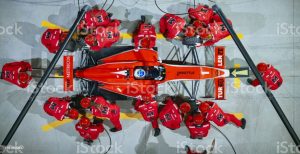Leading Industrial Company Solves Inventory Shortfall with Redundant Inventory Analysis
Scope For This Project
- The scope of this project encompasses assessing inventory location.
- The focus will be on reducing redundant inventory location, inventory policy determination and conducting inventory shortfall analysis.
Table of Contents
Inventory Shortfall Analysis
- Excess redundant inventory
- Forecasting demand error
- Overstocking
- Pitfalls of Supply Chain
Company overview
- Our client operates within the industry of fast-moving industrial consumables and slow-moving machinery.
- Our client is a market leader and operates in Australia
- Over 20,000 items and they have 20+ storage locations with 300+ delivery location
Methodology
- The project team will use a combination of market research, data analysis, and internal process evaluations to identify areas for improvement.
- They will also engage with suppliers, stakeholders, and customers to gather feedback and implement changes.
Highly Competitive Industry
Project Objective
Buffetted By Strong Forces On All Sides
- Inventory policy determination
- Solve redundant inventory scenario
- Set up accurate forecasting methods
- Excess inventory and inventory shortfall analysis
Stay Ahead of the Game: Latest Trends in Fast-Moving Industrial Consumables
- Companies are offering a wider range of fast-moving industrial consumables to meet the needs of a diverse customer base and increase their market share
- Clients are expanding their operations into new markets to tap into new sources of demand for fast-moving industrial consumables
- Companies are investing in research and development to stay ahead of the competition and offer new and innovative products.
- Clients are putting a greater emphasis on delivering high-quality products and providing excellent customer service to differentiate themselves from competitors and build customer loyalty.
- The rise of e-commerce has made it easier for companies to purchase fast-moving industrial consumables online, leading to a growth in the e-commerce market for these products.
Customer Trends
- Customers are becoming more cost-conscious and are looking for fast-moving industrial consumables that are affordable and cost-effective.
- Customers are demanding higher-quality fast-moving industrial consumables that meet their specific requirements and expectations.
- Customers are becoming more environmentally conscious and are looking for fast-moving industrial consumables that are sustainable and eco-friendly.
- Customers are looking for fast-moving industrial consumables that are easily accessible and available, such as through e-commerce platforms.
- Customers are looking for fast-moving industrial consumables that can be customized to meet their specific needs and requirements.
Initial Assessment Of Client Problems
- Difficulty in managing and organizing inventory leads to Increased storage costs
- Obsolescence of products due to over stocking
- High Depreciation of inventory value
- Decreased cash flow and profitability due to lack of transparency.
- Difficulty in identifying and disposing of slow-moving items
- Risk of damage or loss of inventory
- Opportunity cost of tied-up capital
- Decreased operational efficiency
- Challenges in accurately forecasting demand and inventory needs.
Key assessment Criteria:
- Probability of Savings
- Project Investment Requirements
- Potential Savings and Timeframe
- End Customer Satisfaction and "Revenue Impact"
- Risks and Mitigation Strategies
The Negative Impact of Not Optimizing Inventory: Consequences Explained
Increased costs
- Maintaining excess inventory requires additional storage space, which can result in increased rent, utilities, and other associated costs.
- These expenses can quickly add up, reducing the company’s overall profitability.
Difficulty in meeting customer demand
- Companies that do not optimize their inventory levels may find it difficult to meet customer demand in a timely manner.
- This can lead to stock-outs, customer dissatisfaction, and lost sales.
Inefficiency in supply chain management
- Excess inventory can take up valuable storage space, making it difficult to effectively manage and organize the company’s inventory.
- This can lead to problems such as damage to goods, lost items, and increased obsolescence.
Excess inventory and storage challenges
- Excess inventory can take up valuable storage space, making it difficult to effectively manage and organize the company’s inventory.
- This can lead to problems such as damage to goods, lost items, and increased obsolescence.
Data Analysis-Problems of our client
- Increased storage costs: Maintaining excess inventory requires additional storage space, which can result in increased rent, utilities, and other associated costs. These expenses can quickly add up, reducing the company’s overall profitability.
- Difficulty in managing and organizing inventory: Having too many redundant storage locations can make it difficult to effectively manage and organize the company’s inventory, leading to problems such as damage to goods, lost or mislocated items, and increased obsolescence.
- Reduced cash flow: Excess inventory can tie up capital that could be used to fund day-to-day operations and pursue growth opportunities, leading to reduced cash flow.
- Inaccurate demand forecasting: Companies with too much inventory may find it difficult to accurately forecast demand for their products, leading to further challenges in optimizing their inventory levels.
- Excess inventory: Companies with too much excess inventory are often unable to quickly respond to changes in customer demand, and may miss out on sales opportunities and lose market share to competitors.
- Inventory shortfall analysis: If demand for a product is higher than anticipated, the company may experience an inventory shortfall, resulting in stockouts, customer dissatisfaction, and lost sales.
- Depreciation of inventory value: Excess inventory that is not properly managed and maintained can become obsolete and have to be disposed of, resulting in a waste of resources and decreased profitability.
- Difficulty in identifying and disposing of slow-moving items: Companies with too much inventory may have difficulty identifying slow-moving items, making it challenging to effectively manage their inventory and reduce excess stock.
- Risk of damage or loss of inventory: Having too many redundant storage locations can increase the risk of damage or loss of inventory, reducing the value of the company’s assets.
Actions to Improve Outcomes: Strategies & Solutions
- Implement just-in-time (JIT) inventory management: JIT aims to reduce inventory levels by only ordering goods as they are needed for production or sales.
- Use forecasting techniques: Accurately predicting demand enables a business to make informed decisions about ordering and stocking inventory.
- Implement inventory control systems: Software solutions can help businesses track inventory levels, monitor stock movements, and generate reports.
- Conduct regular inventory audits: Physical counts of inventory can help to identify discrepancies and errors in the inventory management system.
- Reduce excess and obsolete inventory: This can be achieved through regular reviews of inventory levels and sales trends, and by implementing a process for disposing of unsold goods.
- Streamline the supply chain: By reducing the lead time for ordering and receiving goods, businesses can minimize the amount of inventory they need to hold.
- Consider consignment or vendor-managed inventory: This allows the supplier to manage the inventory levels and replenishment for a business, reducing the need for it to hold large amounts of stock.
Data Analysis:
- Identifying inefficiencies: Data analysis can provide insights into the company’s current inventory levels, storage locations, and demand patterns, helping to identify areas of inefficiency and excess inventory.
- Improving forecasting accuracy: Data analysis can help companies to improve their demand forecasting accuracy, which is critical for effective inventory management.
- Reducing inventory holding costs: By analyzing data on inventory turnover rates and storage costs, companies can determine the most cost-effective methods for managing their inventory and reducing holding costs.
- Enhancing customer satisfaction: By having the right inventory levels in the right places, companies can meet customer demand more effectively, improving customer satisfaction and reducing stockouts.
Data Collection Process
- Accurate forecasting and demand planning was achieved by collecting B2B, B2C and stock transfer data for a period of 44 months
- For more efficient data analysis and machine learning, the collected data was cleaned and organized.
Key assessment Criteria:
- Data was diligently cleansed and interpolated in case of incompleteness.
- A complete picture of the supply chain modelled for each of the years.
Time to conduct Analysis
- The process of conducting the preliminary analysis took 2week, followed by 20 weeks of additional analysis aimed at optimizing shipping costs.
- An additional 6 weeks were required to present the findings and gain approval from the board
Our Results

- Our client identified 64% redundantstorage.
- Set up tools and infrastructure for accurate demand forecasting
- With proper inventory optimization our client saved $20M and additional cost savings of $7M.
Project recap
- The client operates in the fast-moving industrial consumables and slow-moving machinery industry in Australia.
- The project aims to assess inventory location and reduce redundant inventory location, determine inventory policy, and conduct inventory shortfall analysis.
- The clients’ problems include difficulty in managing and organizing inventory, obsolescence of products, decreased cash flow and profitability, and difficulty in accurately forecasting demand.
- The consequences of not optimizing inventory include increased costs, difficulty in meeting customer demand, inefficiency in supply chain management, and excess inventory and storage challenges.
- The data analysis showed increased storage costs, difficulty in managing and organizing inventory, reduced cash flow, inaccurate demand forecasting, excess inventory, inventory shortfall, and depreciation of inventory value.
- We solved the problems of client by recementing our tailored solutions.
- With our suggestion and results the client saved $20M and additional cost savings of $7M.
About the Author
 Vivek Sood: Sydney based managing director of Global Supply Chain Group, a strategy consultancy specializing in supply chains. More information on Vivek is available on www.linkedin.com/in/vivek and more information on Global Supply Chain Group is available www.globalscgroup.com
Vivek Sood: Sydney based managing director of Global Supply Chain Group, a strategy consultancy specializing in supply chains. More information on Vivek is available on www.linkedin.com/in/vivek and more information on Global Supply Chain Group is available www.globalscgroup.com
Vivek is the Managing Director of Global Supply Chain Group, a boutique strategy consulting firm specialising in Supply Chain Strategies, and headquartered in Sydney, Australia . He has over 24 years of experience in strategic transformations and operational excellence within global supply chains. Prior to co-founding Global Supply Chain Group in January 2000, Vivek was a management consultant with top-tier strategy consulting firm Booz Allen & Hamilton.
Vivek provides strategic operations and supply chain advice to boards and senior management of global corporations, private equity groups and other stakeholders in a range of industries including FMCG, food, shipping, logistics, manufacturing, chemicals, mining, agribusiness, construction materials, explosives, airlines and electricity utilities.
Vivek has served world-wide corporations in nearly 500 small and large projects on all continents with a variety of clients in many different industries. Most of projects have involved diagnostic, conceptualisation and transformation of supply chains – releasing significant amount of value for the business. His project work in supply chain management has added cumulative value in excess of $500M incorporating projects in major supply chain infrastructure investment decisions, profitable growth driven by global supply chain realignment, supply chain systems, negotiations and all other aspects of global supply chains.
Vivek has written a number of path breaking articles and commentaries that are published in several respected journals and magazines. Vivek has spoken at several supply chain conference, forums and workshops in various parts of the world. He has also conducted several strategic workshops on various aspects of supply chain management. He received his MBA with Distinction from the Australian Graduate School of Management in 1996 and prior to these studies spent 11 years in the Merchant Navy, rising from a Cadet to Master Mariner.
More information on Vivek is available on www.linkedin.com/in/vivek and more information on Global Supply Chain Group is available on www.globalscgroup.com
Related Posts
Click below to see related posts.

The Impact of Plummeting Shipping Container Prices Across Industries
Explore the far-reaching consequences of plummeting shipping container prices on diverse industries, revealing the intricate connections shaping global trade, supply chains, and economic landscapes.

Race Day Logistics: Intricacies of Pit Stop
Explore the race day’s heartbeat: the art of pit stops. Uncover the intricate logistics orchestrating split-second tire changes, refuels, and strategy adjustments that define Formula 1’s high-speed drama.

Mastering Travel Logistics in Formula 1 Racing
Discover the art of flawless travel logistics in the high-speed world of Formula 1. Uncover how precision planning and real-time coordination keep teams on track across the global circuit.
